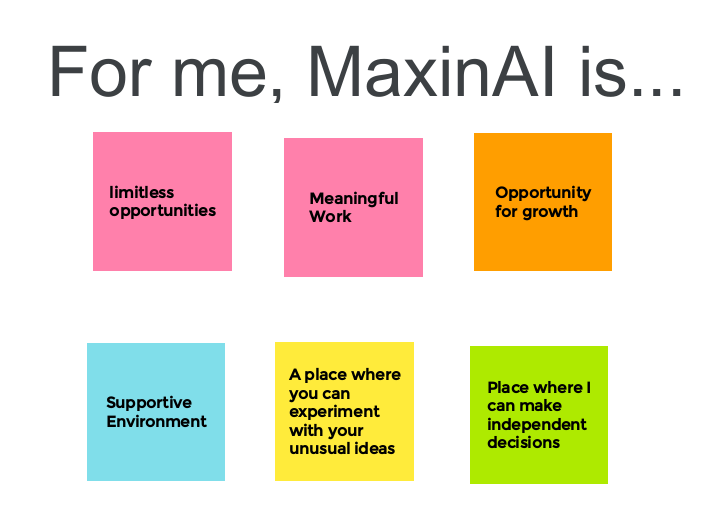Category: Resources
If you are looking to outsource software development, there are a few things to know about the top countries for outsourcing. Here’s a tip – The United States and Western European countries are not among them. This may seem surprising to you, but there is a reason behind it.
Most of the time when companies outsource, one of the main things they look for is cost reduction. However, in the case of the US and Western Europe, due to the high cost of living, the salaries are much higher than in other places.
So although these countries are well-developed in terms of talented individuals and technology infrastructure, it’s not really a good choice for outsourcing software development.
We know how difficult it can be to find a country with reliable software engineers, as there are many factors that you need to consider. That is why we made a list of 5 of the most popular countries that companies choose when outsourcing their projects abroad. Let’s get started!
What is outsourcing?
First, let’s understand what outsourcing is. Outsourcing means that a company hires another firm to handle specific business functions instead of dealing with them in-house. This could be anything from customer service to software development or even research & design work.
This hiring practice became increasingly popular, especially after the pandemic forced many companies to switch to remote work. Due to the affordability of outsourcing, it is no wonder that software engineering and programming are on the top list of outsourced services globally.
Things to consider when choosing a country for outsourcing


Before you start choosing your outsourcing partners, there are some important details to research about the countries from which they operate.
Average salaries
Researching average salaries by industry is important as it will give you a rough understanding of hiring costs. It is an indicator of how much money you can expect to save by outsourcing software development projects abroad.
Another good way of checking if salaries are reasonable in a country is by looking at their GDP per capita. This also gives you the idea of living standards and cost of living there, which will help with making salary comparisons between countries.
Stable Internet availability
The internet is an essential part of modern-day business and it’s no secret that we rely on it more than ever. That is why another crucial factor to consider when outsourcing is the Internet.
You should check if the country has a fast and stable connection, as this will greatly benefit the communication between your team members, especially when handling your software development tasks. Nobody wants their work to slow down because of connectivity issues!
Time zone differences
With the rise of remote work practices, it is no longer strange when different team members work from different time zones. However, finding a country with a time zone close to yours will make management much easier and efficient.
Ideally, there should be some time overlap so that you can easily communicate with each other, without having to wait for hours until your teammates come online and answer.
Political stability and human rights record
When you are outsourcing software development projects abroad, especially when the work is sensitive in nature, it’s important that you consider political issues as well.
Some countries have a poor reputation for violence or corruption which may affect the security of your information and data. Make sure that the country you choose has a stable political system, if possible democratic, which will ensure that there are no threats to your employees or company.
Education
An important detail that you will need to consider when choosing a country for outsourcing, is how well-educated its citizens are. In the case of outsourcing software development, you might pay attention to technical universities and colleges which are known for their excellent computer science departments.
Also, if the outsourcing company is from a non-English speaking country, make sure that the country has a high level of English proficiency. It is always better to handle your projects in the same language as it will greatly facilitate communication and smooth software development processes, resulting in a higher quality product!
Cultural Background
Another thing to consider is whether there are other people from different cultures working on your project. It’s always good to have a diverse team of people from different backgrounds and cultures, as you can learn new things from each other, which can also help with long-term innovation. However, do make sure that despite differences there is still a cultural fit within the team.
Best countries for outsourcing software development
Now that we’ve discussed important things to consider before choosing an outsourcing country, let’s see which countries made the list of best software development providers.
Ukraine
Ukraine is a good outsourcing destination due to its high-quality developers at relatively low prices. There are a lot of IT graduates every year which drives competition up and forces companies to lower their rates even more for this talented workforce.
Ukraine has an excellent education system that produces high-quality developers who are proficient in the English language and have good knowledge of modern technology trends.
Ukraine’s startup environment is also flourishing, which means that there are many interested developers who want to work on innovative projects and get involved in the latest technologies.
In Ukraine, outsourcing a software engineer ranges from $30-$55 per hour.
Georgia
Georgia is a great place to outsource software development, with prices even lower than in Ukraine. But this is not the only reason why the country should attract your attention.
Georgia is still an undiscovered pearl when it comes to IT talents in Europe. After effective educational reforms and the promotion of the startup ecosystem, the number of people choosing IT careers increased. However, excellence and distinction in technical fields are no novelty to Georgia
Even back when Georgia formed a part of the Soviet Union, the country was famous for its leading schools and universities (Komarov Physics & Mathematics school, Vekua Public School, Georgian Technical University, etc.).
Georgia’s history and rapid technological development contributed to the country’s increased number of talents, especially in the IT field. This did not go unnoticed and leading international companies like Microsoft, Skype, Google, Amazon, etc. started employing Georgian talents.
With a high literacy rate, good English proficiency, high internet speed and wide availability, it’s no wonder Georgia is at the top of the software outsourcing list.
You can expect experienced software engineers for $ 20-55 an hour in Georgia
Poland
Poland has an excellent IT workforce which enables companies and individuals from all over the world to access high-quality development at very competitive prices.
Poland’s economy continues growing every year and with its increasing GDP per capita, it attracts more and more foreign investments. With a high-quality workforce and low prices, Poland is becoming one of the best outsourcing destinations in Europe.
The country has invested heavily into education which results in an increasing number of IT graduates every year from famous universities such as Warsaw University or the Poznań University of Technology.
Due to great opportunities, safety and security, as well as being a member of the European Union, Poland is a famous destination for foreign talents from all over the world.
Outsourcing in Poland costs between $50-$100 per hour.
India
India is one of the countries with a great IT workforce that continues increasing every year. It has become an international outsourcing destination because of its English-speaking developers at competitive prices.
In addition, the Indian workforce is very flexible and adapts quickly to new technology trends which leads to a better quality of software development at lower prices compared to many other outsourcing destinations.
Outsourcing in India costs between $20-$50 per hour.
The Philippines
The Philippines is an IT outsourcing destination that continues to attract more and more companies due to its low-cost workforce that has the ability to learn new technologies very quickly.
Due to the country’s history, Filipinos are more used to Western culture, which allows them to work well with foreign co-workers and causes less communication and cultural barriers. English is also widely spoken in the Philippines, making it easier to communicate and collaborate with international clients.
When outsourcing software development in the Philippines, you can expect a cost range between $20- $45.
Which country should you choose?


Outsourcing is a bold step for businesses, this is because you trust a third party with your valuable data and the success of your business. Therefore, when choosing an outsourcing partner, it is important to ensure that you choose a reliable one at reasonable prices.
All of the countries mentioned above are great options and each of them has its individual advantages and disadvantages.
Countries with cheaper rates tend to be riskier because they do not have the same legal framework as Western nations. By choosing a cheaper outsourcing destination, you are taking a higher risk in terms of integrity and protection your data.
On the other hand, although countries like Poland have more trust in terms of protecting customer information and tend to be more security-oriented because of the EU legal system, you need to be ready to pay a higher price for services rendered.
That is why the golden mean would be Georgia. As we mentioned, the cost of living in Georgia is one of the cheapest in Europe and therefore will result in lower expenses when outsourcing Georgian companies.
Additionally, due to the country’s aspiration to become part of the European Union, most companies are regulated on the protection of customer information, which results in taking data security seriously. The country’s progress in integrating European laws gives you a guarantee that in case of any problem, you will be protected.
Georgia is an amazing country with a wealth of talented people and it is the perfect place if you are looking for an affordable but high-quality IT workforce while guaranteeing the security of your business.
Conclusion
When choosing an outsourcing partner, it is important to balance your requirements and needs with the costs of doing business in that country. You need to research all the details to ensure that your project is carried out successfully.
Things like technology development, education levels, and security laws can play a huge role in determining whether or not the outsourcing destination works for your company.
In case you decide to search for Georgian outsourcing companies that offer software engineering talent, look no further.
MaxinAI offshore software development team has years of experience working with startups and large companies alike, so we know how important it is to find solutions specifically tailored to our clients’ needs without sacrificing quality or speed.
Fill out our contact form and let us show you how our team can help you fill your software engineering talent gap and accelerate your projects.
Software developers are a hot commodity these days and since their availability is really scarce, hiring remote programmers is becoming increasingly popular. However, even when hiring remotely, finding top-notch software engineers is not always easy!
But fear not, as this blog post will discuss where and how to find the best remote software developers, as well as give you great advice on what to look for when hiring them. You will also learn about the different types of freelancers you can hire, such as offshore or nearshore development teams. So, make sure to read on.
What are the benefits of working with remote software developers?


Remote working has become quite popular in the past few years. This is because there are several advantages that come with hiring a remote software developer, rather than someone who works in an office setting.
1. Access to top global talents
Working with remote software developers has the benefit of allowing you access to talents from around the world. This is because hiring a developer that lives in another country or even on another continent can give your company access to unique knowledge and skills, which would not be found locally.
When you search for talents only locally, you are limited to the talent pool that is only physically available near you. In such a case, there is less chance of finding the right option that fits your company culture and has the necessary skills.
However, by expanding your search worldwide for the best software developers, you will be able to access thousands of exceptional talent from around the globe.
2. Lower costs
Working with remote freelancers also gives you a chance at lower business expenses and overhead costs as compared to working with an office-based team or hiring locally. This is because you do not pay for office space, office-related expenses or other associated costs.
Furthermore, it is often the case that due to the availability of high-quality talent in lower-wage countries, it usually costs the company less money to pay salaries to remote developers compared to local talent.
This is especially true if the company is based in Western Europe or North America, where the cost of living is usually higher than in other parts of the world.
3. More productive and happy employees
Remote working also brings about another great benefit – happier and more productive employees! The fact that your staff does not need to commute every day, but can instead work from home or wherever they want is already a big plus.
Additionally, the possibility of remote work gives workers a better work-life balance and they can spend the saved time traveling with their friends, family, or doing the things they love.
This is not only beneficial for individuals, but also for companies, as happier employees mean more productive employees. Additionally, staff who enjoy working with your company are more likely to stay and improve your employee retention efforts, which should lead to better business results for you.
What to look for when hiring remote software developers?


When deciding on the best freelancers or other talent options available to work remotely, there are several factors that you need to consider:
- Location – first and foremost, make sure to consider the location of your developer. Remote developers are usually divided into three categories – nearshore (located in a country close by), offshore (located on another continent) or remote workers located within your own country.
- Good communication skills – second, make sure to find a developer with good communication skills. This is especially important if you are working on an international project as such team members need to be able to communicate effectively and successfully work together remotely across different time zones.
- Remote work experience – third, make sure to look for a freelancer with remote working experience. Working remotely is not easy and it requires certain skills such as self-discipline and organization that can be learned through practice or gained from previous work experiences in this field.
- Available resources – Look for developers who have the necessary tools needed for the job. It is important to know in advance if candidates have the necessary electronic devices or if they will need the employer to provide them. This will give you a better idea of the total cost in case of hiring the talent.
- Cultural fit – It is important to consider cultural fit. When working with a remote team member on an international project, make sure that their cultural background and experience match the needs of your company and its projects. This is important because it will help you build a cohesive team, which is essential when working with international employees.
- The programming skills you need – Last but not least, you need to make sure that the developers you are considering hiring can actually do what they say. To avoid wasting time learning that your developer’s skill set is different from what their profile indicates, ask them for an example of a real-life project they’ve done in the past or consider a skills assessment test. This will give you an idea of how competent they are at their job.
How can you find top remote software developers?
Hiring top remote developers is a challenge for almost every business today. There are several ways in which you can hire the best remote programmers for your company.
However, the most important thing before starting your search is to understand why you need these developers. Is it for a one-time project or for a long-term commitment? Do you want the remote developers to help you or take the lead on the technical side of your projects? Knowing the answers to these questions will help you choose the right types of candidates.
Now let’s take a look at the different practices that can help you find the best remote developers.
Freelance platforms
A freelance work platform is a marketplace website where people can earn money by offering their expertise and services. Service offerings range from digital marketing to project management. However, these platforms are widely used by software engineers.
Such websites are a good way to find top remote developers. On a freelancing platform, you will have access to a pool of talented developers from around the world who are looking for work opportunities.
Some of these platforms even allow employers to take part in a contest or challenge that allows them to test their programming skills and see how they fare against other candidates before hiring them.
Another great benefit of these websites is that you can see the reviews and job histories of the developers. This will give you an idea of whether they are suitable for your company or not before you even start hiring them.
Here is a list of the top ten freelance platforms where you can find remote software engineers:
- Upwork – Upwork is one of the best freelance platforms. The number of remote developers on this website makes it ideal for finding your next hire. You can search for both long-term and short-term developers here.
- Toptal – If you’re looking for high-quality freelancers, Toptal might be a good choice. This agency has a strict screening process that only accepts the top 3% of its pool of applicants.
- Freelancer – Freelancer.com is an established freelance platform that allows companies to post jobs and find remote software developers from around the world. The platform is very similar to what Upwork offers.
- Fiverr – This is one of the most popular platforms on which software developers can offer their services. It’s best for small projects with tight budgets.
- Guru.com – Another platform that allows employers to post jobs and find remote programmers or other types of freelancers from around the world.
However, the downside to freelance platforms is that they are not profitable for large-scale businesses. You will have to hire each individual developer, which can make managing your team of developers difficult. Similarly, these platforms almost always charge a commission of up to 30% of the developer’s salary, which could cost you more in the end.
LinkedIn is a good place to look for remote programming talent. It allows headhunters to filter their search for developers by the skills they require, as well as job titles and positions. Recruiters can also post a job advertisement on the platform where they mention job requirements, necessary skills, benefits, etc.
If you’re struggling to find talent on this website, don’t forget that you can always purchase a premium account and access premium search filters, view expanded profiles on LinkedIn, and much more.
Online communities
There are several online communities of software developers where you can find top remote programmers. These websites allow members to discuss topics relevant to their industry and trade advice.
Websites like Github, Stack Overflow, and HackerNews are widely used by software professionals from all over the globe. They are good choices to search for candidates with the necessary skills.
These websites also have a large pool of developers who can offer their services as freelancers. You will need to create an account in order to gain full access to the pools of developers on these sites.
Outsourcing companies
Outsourcing companies can also help you find top remote programmers quickly. These companies employ thousands of software engineers and other professionals from around the world. They provide big businesses with access to a large pool of developers, often at lower costs than hiring locally.
Outsourcing companies are a great option when companies are looking to hire not just one, but an entire team of developers dedicated to their project.
The main benefit of hiring developers from an outsourcing company is that businesses can instantly hire talent without going through the detailed and time-consuming selection process. Outsourcing companies have recruitment teams on their payroll which can help find talented individuals and offer them on a contract basis for businesses who require their services. And since the reputation of these companies depends on the quality and professionalism of the developers they offer, rest assured that the reputable outsourcing companies dedicate the maximum attention and time to selecting the best talent.
However, there are several things to consider when choosing an outsourcing company:
- Explore if the company is investing enough time into recruitment before heading to them for help. You would hate it if you’re forced to wait weeks for a new developer to join your team or if the new hire doesn’t possess the right skills for your project.
- Check how long they have been in business and what kind of projects they’ve completed in the past. Ask about their portfolio of recent projects. This will give you an idea of whether the team is able to handle projects of the same magnitude as yours.
- Make sure you are comfortable with their payment structure and policies. Ask if you will have to pay developers hourly, monthly, or per project, and decide if such a pay structure is right for you.
- Ask the company how employee communication will be managed. Will the remote developers be communicating with you directly through Skype, Slack, or email? Or will the management of the outsourcing company handle all communication on behalf of its employees?
- Another important thing to consider when hiring remote developers from an outsourcing company is data security. Any business that requires a large amount of sensitive data should ask the company if they have measures in place for protecting this information.
MaxinAI outsourcing services


Looking for a reliable outsourcing company? We all know that finding the right outsourcing partner can be difficult and time-consuming, especially when you have no idea where to begin or what questions to ask.
MaxinAI offers you access to a dedicated remote team of software developers who can help your project succeed. We provide full-cycle services starting from project planning to deployment support, so that you can focus on your business while we take care of technical tasks related to product development.
We offer you full transparency into all of our processes including code reviews, bug tracking & testing cycles so that you always know exactly what stage your project is at and how we’re progressing towards completion. This way you won’t have any surprises or delays along the way – just better quality work delivered faster and cheaper than ever before! Fill up our contact form and let us show you how our service will strengthen your projects.
Conclusion
As we saw above, To find top remote software developers, you don’t have to go far. There are many online communities of programmers where you can post a job opening and receive responses from talented individuals who are willing to work remotely for your business.
However, if you are looking for a full team of developers, outsourcing companies are the best option and provide great opportunities for businesses.
To avoid any unpleasant surprises or wasted time, make sure that you do your research before selecting which company is best suited for your needs.
Like everything else, hiring remote teams has its downsides, but the benefits that come with it outweigh the drawbacks. On top of that, the current situation and way of working have definitely made remote work a new norm and we have yet to see such practices grow.
The days of leading and managing a team in the office might not be over but with more and more companies going remote, it has become necessary to develop new leadership strategies for this modern workforce.
Leading and managing a remote team can be difficult. You have to ensure several things like:
- Employees getting the necessary information;
- Communicating with your employees regularly about their work;
- Encourage socialization among remote team members;
- + so much more
These tasks are not unique to remote work practices but can become more complicated, especially for virtual teams.
So how do you ensure good management and leadership so that your remote team is as effective and efficient as ever?
There are several strategies you can employ to make your life as a leader or manager of a remote team easier, and we’re going to talk about that today.
What is a remote team?


Remote teams are members that do not work in the same office. They are organized through technology, webinars, social media, video conferencing and using other communication tools to collaborate with one another. Remote team members might work from outside the state or even the country while still being part of an organization’s workforce.
A remote team can consist of only two people operating together remotely all the way up to thousands of individuals who are distributed across various locations. Remote workers can supplement their income by logging hours remotely for a project while living in a low cost-of-living area or they may be seeking more scheduling flexibility that allows them to spend more time with family or pursue other interests outside of work.
Why is remote working such a popular practice today?
Remote work has skyrocketed since the onset of the pandemic, which forced many companies to close their physical offices and carry out operations virtually.
However, employees have long been asking for and wanting the ability to work remotely. Why’s that?
Employees love remote working because it is in line with their preferences and needs. It allows them to choose from where they want to work and saves their time by removing the commuting need.
Remote working not only saves employees travel time, but also the costs associated with it, which means they can save money by eliminating these expenses.
As for employers, they love the idea of remote working because it solves a lot of problems. It helps them save money on office-related expenses (electricity, rent, heating, etc.), find better talent, avoid office politics, and lower employee turnover rates.
With all of the above in mind, it’s no wonder remote working practice is spreading so quickly in companies around the world.
How to handle the challenges of managing a remote team?
Leading and managing a remote team is often regarded as one of the most difficult tasks in an organization. While they can be an asset to any company, there are many challenges that come with having employees work remotely including trust, communication, accountability and organizational culture.
However, since many companies are already engaged in the practice of remote work, fortunately, there are many proven strategies that ensure the successful management of such teams. Let’s take a look at them.
1. Set clear expectations about company culture
Company culture means the values, beliefs and attitudes that are shared by employees. It is the foundation of your company’s environment and defines how people act within it.
Company culture is important in any organization, but it is even more critical when you are leading a remote team.
As a leader or manager, you cannot expect remote team members to be aware of what this culture is if they never experienced it in person firsthand.
As such, it’s up to you to ensure that your remote employees adhere to company policies and follow certain rules about communication etiquette.
To make this process easier for both parties involved, communicate with them on what kind of behavior is expected from each member within the team and how they are expected to communicate with other members.
Make an employee manual that includes information such as company culture, rules, and expectations to set the remote team up for success.
2. Encourage daily check-ins


Check-ins are important because it enables managers to connect with their staff, understand where they are right now, identify their challenges, and ensure the team is working properly to achieve company goals.
The importance becomes even more crucial for remote teams because they don’t have the luxury of seeing each other in person. It is therefore important to set up check-ins on a daily basis so that everyone can stay aware of what’s going on with their team members, and how work is progressing overall.
Make sure your remote employees know when these meetings are scheduled for by sending out an email or invitations in their calendars.
The format of chek-ins can vary from company to company and it is up to you to decide how this process will work for your team. You can do video calls or simple text updates in chat.
For many remote teams, the check-in happens at a set time each day (for example, between 11 am and 12 pm). Other companies like their employees’ input on what is the best time that works well for them within the timeframe they are all available.
Regardless of what you decide, make sure to set these meetings in advance so that everyone is aware of when it will happen.
3. Take advantage of the tools you have at your fingertips
Fortunately today, there are a host of collaboration and project management tools that help remote teams with communication, meetings and task management.
The advantage of using these tools is that they are available on any device (desktop, laptop or smartphone), at any time, anywhere in the world!
This means that you can connect with your staff and see what project they are working on, whenever necessary, simply by opening these software.
Tools such as Google Drive, Slack, Trello and Jira are especially effective because they have collaboration features that allow everyone to stay up-to-date on the progress of a certain task or project without being distracted from their own work.
As a manager, it is important that you know these tools to keep your staff engaged, connected and up-to-date.
4. Focus on accountability
Holding employees accountable for their work will not only give them a sense of responsibility, but also the confidence that they are in charge of their own projects, in their own phase.
Set performance indicators like KPI’s, OKR’s and SMART goals in order to help your employees with this. Performance indicators will help them understand what they are working towards so that they can manage their time more effectively.
If your remote employees feel like nobody is keeping track of how much work they have done on a daily basis, the chances are high that it will be harder for them to stay motivated and productive.
5. Be transparent


Due to the lack of transparency, people tend to be left out of important information because it is not widely available and is only communicated between closed groups.
Encourage your remote team to be transparent with each other by sharing information, ideas and updates about a project.
This can be done by encouraging the team to prioritize public channels, store documents in public folders, and share their projects and results with the entire team.
Transparency will help your remote staff to trust one another and feel more connected so that they can work together in achieving the company goals. It is important for you as well because it enables managers to better understand what his/her team is up to.
6. Prioritize team spirit
Team spirit creates a feeling of belonging and having a sense of purpose.
Since you are not able to see your team members in person, it becomes even more important that they feel like they’re not alone and are actually an important part of the team.
Organize online team building activities like:
- Webinars or video conferences about company values and vision
- Virtual board game nights
- Employee awards to publicly recognize their value to the company
These activities will help your team to feel more connected and this helps them start working together towards the same goal as a cohesive unit.
7. Hire the right team
It’s important to make sure your hires are right for your business, regardless of whether your business operates remotely or not.
However, when it comes to remote team members, you need to be very cautious to make sure people are ready to be a part of that work environment and have the right skills.
Ensure that your candidates are able to communicate well, show initiative and have good time management skills.
Keep in mind that hiring talented employees who aren’t a good fit could actually create more problems than benefits because they will not be comfortable in that environment.
Hiring the right people will help your remote team get along better and be more productive, so it is worth taking a little more time to find the perfect fit.
Conclusion
If you’re struggling to lead and manage a remote team, take some cues from these strategies.
Focus on accountability by holding employees accountable for their work and performance indicators like KPI’s or OKR’s.
Be transparent by encouraging your staff to share information with one another in public channels or folders.
Prioritize team spirit by organizing activities that bring the group together (virtual board game nights) and hiring people who will fit well into your company culture.
Hire carefully so you can find someone who is right for this type of management environment!
Hopefully, with these tips, you will be able to effectively lead and manage your remote team and bring success to your business.
When you think of customer service, what comes to mind? Most people would say either calling for assistance or visiting a store. But what if I told you there was now another option? Customer service has been revolutionized thanks to chatbots!
Now, when I mention chatbots you might think about automated messages that don’t really help you. But that’s not accurate anymore!
With the help of artificial intelligence, chatbots have come a long way and are helping businesses improve customer service operations in a number of ways.
AI-powered chatbots are making their way into more and more businesses, as they have proven themselves to be an efficient solution for improving customer service operations. This blog post will discuss how this technology can help your business attract new customers, retain old ones, and improve the overall experience of those who visit your website or social media pages.
What is a chatbot?


Chatbots are computer programs designed to simulate human interaction through speech. They are usually integrated into messaging apps and allow businesses with limited resources to provide 24/7 customer care services at a lower cost than hiring humans. With this new technology, customers can interact with brands anytime, anywhere they want on any device. Businesses have the ability to cut down on costs while simultaneously improving customer service experiences!
How does AI help?
AI-powered chatbots are generally considered artificial intelligence because they simulate human interaction with the same response rate as an average person would.
AI has helped this process even further with the introduction of Natural Language Processing (NLP).
NLP gives machines the ability to understand natural language and respond accordingly, which goes hand in hand with the “humanizing” trend that many companies are adopting.
For example, if an incoming customer request asks “How much does this dress cost?” The bot might reply “For just $25 you can order your favorite style.”
How does that happen? NLP technologies help chatbots to identify and extract the natural language rules like syntax, grammar, and semantics.
This allows for more natural responses that mimic human-to-human interactions at a much higher rate of accuracy than before!
Artificial intelligence also helps chatbots improve using data and assessing how successful their interaction with customers was.
Through machine learning, chatbots are able to collect information on how customers interact with them and improve their services accordingly!
Now that you know what an AI chatbot is and how it works, let’s explore the benefits it has to offer to the business world.
1. Chatbots reduce customer service costs
A chatbot can cut customer service costs, which is a significant part of many companies’ budgets. The cost savings derived from implementing the right chatbot solution are worth the time and effort businesses have to invest.
The cost-efficiency of chatbots from automating customer service and efficiently executing tasks have benefited every industry but interestingly, the banking industry reaped the most benefits. It is estimated that businesses can reduce customer service costs by up to 30% by implementing conversational solutions using chatbots.
2. Chatbots allow a 24/7 service
Chatbots, unlike your human staff, have no need to take breaks, rest on weekends, or sleep. Even during non-business hours, you can still provide support and guidance to your customers.
This is especially important for companies serving clients around the world. Due to time zone differences, it can often happen that the client has to wait until business hours start for the customer service representative.
This inconvenience is instantly handled by chatbots that, regardless of the time or day of the week, can provide quality assistance to the customer inquiry.
3. Chatbots make life easier for your staff
Chatbot technology is beneficial not only for the business but also for its staff. There are multiple interactions with customers asking the same question. This can quickly become a mundane task for customer service representatives and give them a feeling of boredom.
However, with the help of chatbots, the customer service representative’s job becomes easier. This is because chatbots handle mundane work, such as compiling a list of complaints or solving simple problems, while customer service staff focus on more meaningful interactions and inquiries.
4. Chatbots speed up response time


The advantages of using chatbots include quick and fast responses which make them ideal for customer care centers with high call volumes such as airlines and insurance companies.
Chatbots can instantly access customer interaction history and respond to different problems and requests, such as package shipment information, with ease.
Customer service staff, on the other hand, need to ask for customer information to provide support and guidance which typically lengthens response time.
A recent Statista study showed that, on average, it takes customers around 88 seconds to receive a response when using live chat. In the case of chatbot solutions, the response time is almost instantaneous.
The speed of chatbots ensures that customers are satisfied even during peak periods when customer queues are long due to high traffic volume!
5. Customers feel more comfortable with chatbots
When it comes to asking about certain products or services, clients may also feel more comfortable interacting with a chatbot because there is no risk of being judged, which means that clients are free to express themselves without feeling uncomfortable or embarrassed. In contrast, when customers walk into a store or speak to a human customer service representative, they are likely to feel inhibited, as there is a risk of being judged or considered ignorant.
How different industries use chatbots
Due to all these benefits, it’s no wonder that many industries take advantage of chatbots and have found different ways of using them. let’s see how some of the sectors benefit from this technology.
- Airline – For example, airlines use chatbots to provide guidance onboarding procedures and baggage allowance rules. Customers can also get information about flights and book tickets by interacting with chatbots.
- Insurance – Insurance companies have employed bots that help customers purchase policies, process claims, give personalized quotes, and more with the click of a button.
- eCommerce – eCommerce companies use chatbots to help customers get answers to their questions, finalize purchases, receive updates on their shipment, and get support.
- Banking – Chatbot technology has also been embraced by banks who are now able to automate mundane tasks such as bank statement retrieval, historical spending analysis or updating personal information.
- Technology – Chatbots can also be used by technology companies to provide support for software products and services, as well as help with technical issues such as downloads and installations.
Conclusion
Chatbots are quickly becoming a crucial part of customer service by providing convenience and instant access to information, speedier responses than human staff, and an overall better experience for the consumer.
The future is bright for chatbots. More and more companies are adopting them as the preferred way to interact with customers online, as humans become overwhelmed with exponential amounts of requests. In fact, 40% of Internet users worldwide stated that they prefer to interact with chatbots than with virtual agents.
This technology is sure to continue evolving as time progresses; we look forward to seeing what comes next!
The future of online retail is just beginning to unfold. We’ve seen the introduction and evolution of e-commerce, and now we’re seeing a new wave: Artificial Intelligence.
The rise of AI has been meteoric in recent years thanks to an explosion in data collection and processing power, as well as improved algorithms for machine learning.
This trend will only continue as our reliance on technology increases and more businesses turn towards digital solutions such as artificial intelligence (AI) to improve their operations.
However, for this article, let’s discover the magic that takes place when AI and e-commerce meet.
What is e-commerce?


E-commerce is a blanket term that encompasses digital stores. It refers to the process of selling products or services over an electronic network. The most common type of e-commerce is a business that sells goods through a website.
E-commerce is booming. Online retail sales worldwide increased from 1,3 trillion in 2014 to 4,8 trillion in 2021. In fact, more than 79% of Americans have shopped online at some point during their lifetime.
In the beginning, people were skeptical about e-commerce because when you wanted to purchase something online, there was no guarantee that the price would be good or the product wouldn’t arrive broken.
But in recent years, because of new safeguards like an easy return policy and customer service, people have started trusting e-commerce platforms more and more.
Many sellers also offer discounts to incentivize purchases on their sites. Plus, they can reach more customers than it’s ever been possible for brick-and-mortar stores.
This brings us back to another factor that made e-commerce so popular: convenience!
The convenience of the customer is always the main priority for an e-commerce company. Customers can purchase anything they need at any time, day or night, without spending additional money on gas just to stop by a store.
When looking for a certain item, online shoppers don’t need to leave their home or office – they just open up their laptop or mobile device and place an order.
Additionally, since it only takes seconds to purchase an item online instead of waiting in line at a store just to buy that one thing, e-commerce sites are able to offer sales and promotions more often than traditional brick-and-mortar chains.
What is AI?
AI is a branch of computer science that studies how to make computers do the things that would require intelligence if done by humans. It’s a hot topic in all fields, from healthcare and education to business and law.
AI has infiltrated every industry and is here to stay.
It’s hard to imagine a future without AI, as it will continue to rapidly grow in importance across all industries.
There are several reasons for this growth:
- The availability of big data
- Advances in machine learning technologies
- Increased focus on customer experience
- Need for automation
AI stands poised to have a significant impact on how people work and live their lives – even if they don’t know it yet.
AI in E-commerce
This rapidly advancing technology has had some significant impacts on the e-commerce business.
One of these changes is how AI can be used to improve customer interactions and streamline business processes, which will lead to an optimized customer experience on and off their website.
The benefits of gaining insights from the collection and analysis of customer data can be further enhanced with the help of artificial intelligence to tailor e-commerce services to the tastes and interests of each individual customer.
With the help of artificial intelligence and data collected from both the business and its customers, today’s online retailers make better decisions by using it to more accurately predict future outcomes and adjust operations accordingly.
Let’s find out more about some of the benefits of AI in the eCommerce industry:
1. AI-driven Site Search for eCommerce


Site search is one of the most valuable tools available to online retailers.
It helps customers find, compare, and purchase products quickly and easily on an e-commerce site—and it’s also a key factor in driving conversion rates for online retailers.
That is why it is important for e-commerce to not only ensure high-quality search, but also to go one step further and provide a great customer experience. How exactly?
The answer lies in artificial intelligence (AI), as it takes the entire search experience to the next level.
Instead of giving shoppers basic and dull search results, with the help of artificial intelligence companies can implement:
- Self-learning search that develops with the interaction of each customer and returns results for specific and long-tail keywords.
- Visual search that gives buyers the opportunity to find products similar to the ones in the uploaded image.
- Voice search that has speech recognition and will allow your customers to find products without typing the keywords.
2. AI-driven eCommerce personalization
One of the ways that AI can help today’s online retailers deliver an optimized customer experience and ensure customer loyalty is through its ability to personalize e-commerce services.
Based on users’ interactions with the e-commerce platform, like past purchases or browsing history, AI can recommend items the user might be interested in.
For example, if some of your previous searches on Amazon have been for dog collars, your product recommendations the next time you visit the website are more likely to be about pet products.
This is because the retail giant knows that your interest is currently related to pet products and therefore provides relevant suggestions.
This not only improves the entire customer experience but also helps businesses drive sales.
E-commerce companies implement these personalization techniques at various points of contact with customers, not just on websites.
The next time you receive an email newsletter from your favorite retailer, which includes the products you’ve been looking for, don’t worry, it’s just AI-powered automation doing its job.
3. AI-powered chatbots
Chatbots are a type of artificial intelligence that allows customers to interact with businesses through the use of text or voice messages.
This technology has grown leaps and bounds in recent years thanks to advancements in artificial intelligence (AI), natural language processing (NLP) and machine learning algorithms that have enabled chatbots to understand human speech better than ever before -and respond accordingly with relevant information.
As Chatbots made significant advancements in recent years, they have become increasingly popular for online retailers.
Chatbots help e-commerce businesses by responding to customer inquiries about products and services, as well as providing feedback on orders.
Buyers don’t have to wait for a human service agent to tell them the status of their order, product availability, the company’s return policy or recommendations, they simply connect with a chatbot and receive a response in a matter of seconds.
As companies continue to invest in chatbot technology for their e-commerce websites, these virtual assistants will only get better at understanding what a shopper wants from them.
We are already seeing progress with virtual assistants such as Siri or Alexa. In the beginning, people were having fun with them by asking questions about anything from the weather to what to wear on Wednesday night.
However, today, technologies like Alexa can perform more complicated tasks, like ordering straight from amazon and requiring nothing more than a simple voice command.
The future of chatbot technology looks bright because it presents an opportunity for brands looking for more creative ways to interact with customers online while also closing the gap between customers and businesses.
Chatbots can offer a faster and more convenient way to conduct certain transactions and provide the same level of customer service as a human representative or even surpass it by providing benefits like 24/7 availability.
4. AI-powered product pricing


Retailers are always trying to find ways to optimize their business processes and meet the ever-changing needs of their customers.
For both online retailers and traditional brick-and-mortar stores, this means adding new products to your inventory, adjusting pricing strategy based on demand, and identifying trends that will influence how to market certain items.
These decisions can be difficult for even the most experienced retailer because they involve predicting the future.
While no one has a crystal ball, AI is able to help eCommerce businesses make better predictions by using collected data about past sales patterns as well as information gleaned from social media conversations about trending topics.
Once all this data has been analyzed, AI can offer retailers to adjust prices to optimize margins and increase sales possibilities. This is also called dynamic pricing.
Dynamic pricing is a retail strategy where the price of an item varies based on customer demand. A retailer might have two different prices for one item, or change the price hourly depending on how many units they currently have in stock.
With sophisticated technology available like artificial intelligence, dynamic pricing has become even more popular among retailers who want to offer customers lower prices during low periods of demand (think “Black Friday” sales) while still generating revenue
With sophisticated technology like artificial intelligence, dynamic pricing has become even more popular with retailers. It gives the eCommerce store the ability to:
- Offer customers lower prices during periods of low demand (think “Black Friday” sales) while still generating revenue.
- Target consumers with a higher willingness to pay and maximize profits.
5. AI-powered customer churn prevention
For e-commerce, customer churn is the process of customers opting out of an eCommerce platform or service.
Customer churn can be caused by a customer’s dissatisfaction with the quality of goods, their inability to find what they are looking for on the website, or most importantly because they have found better alternatives elsewhere.
When it comes to online retail, this means that once you’ve lost a customer to another company’s website or store, there is no guarantee that they will return after finding out about your competitor’s offers and discounts.
Typically businesses focus more on retaining current customers rather than trying to gain new ones;
This is because if customer churn is left unchecked, over time these losses can lead to significant penalties in revenue and profits.
One way retailers combat this issue is through AI-powered customer churn prevention.
With the help of powerful tools like predictive analytics, online retailers can identify which customers are likely to churn.
Here’s how predictive analytics works: it uses business data about past events (i.e., customer behavior) combined with data about current conditions (i.e., website traffic, user activity, etc.) to make predictions about future outcomes (i.e., churn).
This is done by analyzing customer behavior and activity. If the user has not logged in for a long time or has not placed an order, this may be a prerequisite for a churn.
AI solutions automate this entire process by not only identifying those who are likely to drop out, but also engaging them with promotions like discounts to avoid loss.
Thanks to such automation, e-commerce stores can focus their efforts on retaining these valuable customers and take steps to prevent them from leaving in the first place.
The future of AI-driven eCommerce


One of the promising technology that is likely to merge with eCommerce is Virtual Reality (VR).
VR is a computer-generated simulation of a three-dimensional image or environment that can be interacted with in a seemingly physical way by a person using special electronic equipment, such as goggles.
Virtual Reality has been described as like “being there” and gives one the feeling of being in another place inside one’s head.
Virtual reality became popular mainly from video games and entertainment media but it looks very promising for e-commerce and retailers too.
The future of e-commerce is all about immersive experiences. The best way to get customers engaged and excited about a product, the more likely they are to buy it.
One way that retailers can do this is by using virtual reality (VR) technology for their online stores. VR has the potential to allow consumers to virtually “try on” clothes or shoes before buying them or even take a tour of a store without leaving home.
Mass usage of such technology in e-commerce should be no surprise because online retailers are already using augmented reality.
For example, Amazon introduced AR View in 2017 which allows customers to get a virtual preview of the products they are considering purchasing. For instance, you can use this tool to see if that new phone case will fit your device before buying it or seeing how that couch you´ve been eyeing for so long will fit in your living room.
These AR applications allow users to see what their homes, surroundings, or themselves would look like with various pieces of products such as clothing, furniture, or appliances.
This experience will be further expanded with fully emerging users with the help of virtual reality where shoppers can visit stores without leaving their homes.
Conclusion
The future of online retail will be defined by AI. No matter how you feel about the technology, it’s not something that can be ignored or avoided – so get ready to embrace it.
You don’t have to become an expert in order for this shift to take place; instead, focus on staying current with new developments and utilizing AI-powered tools where appropriate. As long as you’re willing to put in a little work up front, there are plenty of ways that AI could help your business thrive tomorrow!
The retail industry is evolving. And AI is at the forefront of this evolution. Retailers are using artificial intelligence to create innovative new products, solve problems and increase customer satisfaction.
In the retail industry, artificial intelligence is not a new concept. In fact, big data and machine learning have been essential to retailers for years now. AI has been used by many different retailers in order to optimize operations and increase revenues
From Walmart’s virtual shopping assistant in its app to Amazon’s Alexa platform, there are many ways that AI can help retailers improve their operations and profits.
AI has already begun improving the way companies like Nike, Microsoft and Walmart manage their supply chains, reduce labor costs or offer shoppers with personalized product recommendations when they log on to the company website.
This article will take a look at how different famous retail companies use artificial intelligence in their operations, what benefits does it have to offer for both customers and employees alike not just today but also tomorrow!
What is the meaning of the retail sector?
The retail sector is the economic sector involved in the sale of goods to consumers. This includes any business which provides services or products. It also encompasses wholesale trade and storage as well as rental services that are typically offered by retailers.
What is Artificial Intelligence?
Artificial Intelligence is a field of computer science and engineering that deals with computationally intelligent agents, such as self-driving cars or self-learning robots.
An artificial intelligence system learns from general knowledge about concepts in the real world through data mining and pattern recognition. In short, AI helps to augment human decision-making when it can’t be done without humans.
Walmart


Walmart is a multinational corporation that operates a chain of hypermarkets, discount department stores and grocery stores. As of 2019, Walmart operated 11,847 stores.
Walmart uses AI to manage inventory and reduce labor costs.
Walmart has been using AI for some time now in order to manage its inventories. For example, Walmart uses machine learning software so it can monitor its supply chain and identify when there is a need to restock certain products on the shelves at specific stores. The company also analyzes past sales data so that it can predict what will sell and when, and then uses that information to ensure the right products are always available for its customers.
Amazon
Amazon is American electronic commerce and cloud computing company with headquarters in Seattle, Washington. It is the largest internet-based retailer in the world by total sales and market capitalization.
AI has been used by Amazon for years now. However, only recently the company started using artificial intelligence in order to create innovative new products such as Amazon Alexa.
This AI platform was introduced in 2014 and has since become one of the company’s biggest assets.
It can be found on all kinds of devices – from speakers to microwaves – that are connected through an app that makes it possible to order Amazon products, play music or even get news updates.
Alibaba Group
Alibaba Group is one of the most comprehensive business-to-commerce companies in the world. It was founded by Jack Ma and Eric Zhang in 1999.
Aside from being a direct sales platform to sell their products, Alibaba also has offline stores all over China. From retailing to logistics to payment processing power, Alibaba can do it all!
With the help of AI, Alibaba group is able to optimize its operations and increase revenues.
One way they do this is by writing thousands of product descriptions in seconds. How does the company do it? With the help of AI, of course.
Alibaba doesn’t have to pay individual content writers for compelling product descriptions; Instead, they turn to artificial intelligence technologies for help and not only cut costs, but also cut time for content production.
Alibaba has been using AI in order to help with logistics, product recommendations and even forecasting demand levels based on weather patterns for its offline stores so that they know how much inventory should be kept at each location.
Carrefour


Carrefour, founded in France in 1959 is one of the world’s largest retail groups. It runs a global network of hypermarkets, supermarkets, and convenience stores, with 12,225 outlets in more than 30 nations as of January 2021.
Carrefour started using AI in order to help with inventory management and optimizing its supply chain processes. The retailer also created an app powered by AI which will be able to offer customers a checkout-free shopping experience.
However, the company decided to include futuristic ways of utilizing artificial intelligence such as having robots working at their stores. These robots help with stock management by patrolling and monitoring if the shelves are full.
Conclusion
Artificial intelligence has been around for a while now and it’s already impacting businesses in tangible ways.
Whether you need help with inventory management, optimizing your supply chain processes or even creating innovative new products like Amazon Alexa, AI is here to help.
When companies use AI they are able to cut costs and time needed for content production by turning instead to artificial intelligence technologies such as writing thousands of product descriptions at the same time.
If this sounds interesting and captivating enough for you let us know so we can start helping you get on top of things today.
Marketing is changing. As the digital era evolves, so does marketing. The recent boom in artificial intelligence (AI), machine learning (ML) and big data analytics have led to a new wave of opportunities for those looking to refine their customer engagement strategies.
AI is taking over much of the decision-making process for marketers, which has helped eliminate many of the traditional challenges that come with marketing.
While AI has been used successfully by marketers for years now, it’s only recently that these systems have become powerful enough to take on more complex tasks such as predictive analytics and machine learning.
For example, an email service provider can use AI to determine what time a person is most likely to read their emails and send out messages accordingly.
AI also provides insight into customer interactions and target audience profiles so companies know who they’re talking to and how best to talk with them in order to get results.
It’s time to take your marketing efforts up a notch and get serious about understanding who your customers are.
The old-school method of just guessing isn’t going to cut it in this day and age. With the help of AI and big data analytics, you can gain valuable insight into what people want from you and how they behave when they visit your website or interact with your company.
If you’re interested in improving your marketing efforts without having to devote an immense amount of time or resources, then read on!
What are AI, ML and Big Data?
Artificial intelligence (AI) is intelligence exhibited by machines, in contrast to the natural intelligence displayed by humans and other animals.
It encompasses various aspects of intelligence, such as reasoning, knowledge representation, learning and planning. AI has been motivated largely by some of the limitations of human intelligence.
Machine learning is a set of computer algorithms that offer vast opportunities to help marketers. Machine learning can identify accurate consumer patterns, therefore opening the door for potential improvements in decision making.
Machine Learning utilizes software that can learn from data, without being explicitly programmed for one task or another.
The software does not only provide insights when given data, but it also has the capacity to alter its process when new data is presented.
This function enables businesses to explore entirely uncharted territory when looking at customer patterns and behaviors – which aids in reaching their target consumers with better marketing strategies every time they interact with them.
Big data is the large volume of different kinds of information that is analyzed and processed. The characteristics of big data are that it must be accessible, affordable, abundant, and scalable to support the business intelligence needed for a company’s planning and decision-making processes.
Big data analytics is an umbrella term for a variety of tools that are used to aggregate large amounts of data. Big data analytics may be geared towards understanding user behavior, analyzing social networks, finding patterns in healthcare conditions, or predicting the global economy.
The real value is in big data’s predictive power – the ability to process terabytes or even petabytes of data and use algorithms to uncover connections that would have been impossible to spot with conventional techniques.
How AI and data analytics take marketing to the next level
Let’s explore the benefits that AI and data analytics have to offer to the marketing industry.
1. AI-powered personalization


In a world of information overload, the only way to cut through the noise is with personalized marketing.
Personalization is the process of making a product or service fit better with a customer’s needs.
By having access to big data on customer behavior, the company can get answers to some fundamental questions marketers face every day – what do our customers want and when do they want it?
After having access to data on customer behavior, AI-powered technologies learn user preferences and behaviors in the course of seamless service delivery and then apply this knowledge to fine-tune marketing campaigns.
For example, if a particular individual’s most common search on an online sports shop is football t-shirts, sending offers about skiing gear might not be relevant and potentially result in a lost opportunity.
The key component that makes AI so valuable for marketers is its ability to look at individual customer data and come up with personalized messages that speak directly to them about what they want or need.
2. Improved social media activities
The use of AI in the field of social media has been a big discovery for marketers looking to advertise their products and services.
It has been shown that using artificial intelligence in social media marketing can dramatically increase engagement rates and lead to more conversions.
Why? because AI can automate vital aspects such as:
- Customer feedback analysis – By using natural language processing (NLP), artificial intelligence solutions help marketers save time and analyze a large number of customer comments and feedback on different social media platforms. In this way, marketers will have an easily available analysis of customer feelings and opinions about the product/service that can delve into knowing the exact reason (lack of a feature, bad interface, etc.) for dissatisfaction.
- Ad automation – Another way that artificial intelligence solutions make life easier for marketers is by enhancing the performance of social media ads. AI can identify the best target audience for a specific campaign, as well as optimize the bidding strategy and creatives to get the best results and spend the least amount possible.
3. Faster decision making


With access to such a huge amount of data, it is difficult for marketers to act quickly and make decisions. One way companies can address the issue is by implementing an AI solution to analyze their datasets with minimal human intervention.
AI in a fraction of the time can analyze campaign-related data and extract meaningful information such as consumer preferences, most successful campaigns, and client sentiments. With this information, marketers make faster decisions that help improve business operations, marketing activities, and the customer experience.
4. Predictive analytics
Predictive analytics is the process of extracting information from historical data about past events to create predictions about future outcomes.
AI can be used to make predictions about the future of marketing campaigns, such as how many new customers are expected for a product launch based on past buying patterns. This information helps marketers plan their business activities and allocate resources in order to achieve maximum profits.
5. Improved revenue
According to a recent study by Forbes, AI will be responsible for generating $15 trillion worth of economic value by 2030.
Artificial intelligence enables marketers to automate the process of creating an individual strategy for each customer or person based on their wishes, needs, and past behavior.
Automating this process saves companies millions of dollars and time, but more importantly, this helps build a more personalized experience that will result in better conversion rates, greater brand loyalty, and ultimately improved revenue.
Conclusion
As we have discovered, Artificial Intelligence is being used to make marketing more personalized, efficient, and cost-effective for businesses.
By implementing an AI solution in your social media campaign strategy, you can get faster insights into customer behavior that will help increase conversion rates across the board.
If this sounds like something you or your business would be interested in learning more about, reach out to our team of experts today and let us show you how our solutions can take your marketing activities to the next level!
The increase in remote work is also causing the increase in remote interviews.
Interviewing remote candidates for jobs can be difficult. You may not know what they are like in person, and you will most likely never meet them face-to-face.
So, how can you ensure that you are conducting productive interviews with the remote candidates you’re interested in?
Remote interviews can be challenging not only for the interviewer but also for interviewees, but following the right tips can make a big difference in your hiring process! There are many ways you can make the process easier on both yourself and the potential employee.
This article will discuss how to conduct productive interviews remotely, so you can get the most out of this hiring process.
What is a remote interview?
Remote interviews are conducted by phone or video chat and are done primarily because the candidates are located outside of the city, state, or country of the employer.
However, due to the coronavirus pandemic, many companies also began interviewing local talent remotely, due to safety guidelines and security measures.
A remote interview is just like any other job interview; however, there are some factors that set it apart from the in-person interview.
Meeting a potential employee face-to-face is critical to have an accurate idea of their character and personality. However, in the case of remote interviews, it is more likely that you are conducting them with someone who has never met you before, or who has not even spoken with you on the phone.
This can make both of you feel nervous and the process a bit more challenging.
However, conducting productive interviews with remote candidates does not have to be difficult if you follow the following tips.
1. Choose communication tools wisely


From getting in touch for the first time to the final interview – there are many points of contact with your remote candidate throughout the hiring process.
Make sure the tools you use for communication are reliable, easy to use, and help you get as much information as you need about the candidates.
Emails are often the first point of contact when candidates get in touch with you and submit their CV and motivation letter. However, make sure that your next interview steps include phone or video chat.
Recommended tools for voice or video calls are :
Be aware of some limitations when choosing platforms. For example, Zoom and Google offer 1 to 1 video chats for 24 hours, but the duration of the video call is limited to less than 40 minutes when there are more than 2 participants.
Generally, video interviews are better than phone calls because both you and the candidate can see each other, making the process more personal and less awkward.
Additionally, video interviews give you the opportunity to assess candidates’ body language and understand if they are confident and represent themselves accordingly.
2. Consider skill tests
To ensure that candidates’ knowledge and skills match those of your company and the open position, consider including skill tests in the interview process.
Skills tests are a great way to get to know remote candidates and see how they work. It also saves recruiters a lot of time as it filters out all irrelevant candidates or those who do not qualify for the job.
There are many skill test platforms like:
Alternatively, you can also create your own in-house skill-testing platform where you test your potential employees.
3. Give information about the interview process
Informing your remote candidates about what the interview process looks like and how many steps it will take is essential as it is likely that they do not know what to expect.
When you give them a clear expectation, you increase the chance that candidates who agree to the procedures will stay until the end of the interview process.
It’s really uncomfortable to lose good candidates during the hiring process midway because you didn’t communicate enough and didn’t give clear expectations.
Let your candidates know how many steps the hiring process consists of and what each step will include (practical assignments, video interviews, etc.).
4. Note the time zone difference


Hiring remotely means having candidates from different parts of the world. This could mean that when the sun rises for you, your candidate could be going to sleep.
That’s why, when scheduling interview meetings with remote candidates, make sure that it’s convenient for both of you.
It is a good idea to ask your candidates about their timezone and preferred interview times in advance so that they can plan accordingly.
Although most of the online calendars automatically convert meeting times to local timezone, when you decide to send the interview invitation, be sure to put the time zone in parentheses so your candidate doesn’t wonder if the 4:00 p.m. meeting is in your time zone or theirs.
5. Test the process
Be sure to go over the entire interview process with your team before conducting it with candidates.
It is vital to make sure that the process flows well and there aren’t any obstacles or problems in the hiring process.
Double-check if the tools you use for the interview work properly. This goes both for software and hardware.
Is your camera working fine? Or do you have to renew your Zoom subscription so the call doesn’t end after 40 minutes?
Test everything before interviewing remote candidates so that you don’t lose good candidates because of minor issues.
6. Prepare questions


Having your questions ready for the interview is not unique to remote recruiting. However, when it comes to hiring remotely, there are different challenges and therefore, your questions need to be much more specific than usual.
Remember that you can’t see your candidates face to face and the only source of information about them is what they provide online. Consequently, it’s important not just to ask questions but also to prepare follow-up ones so you get as much information as possible from candidates’ answers.
Make sure your questions also include questions about remote work, such as:
- Have you worked remotely before?
- How do you manage your time when working remotely?
- How often do you communicate with your team?
- What communication tools do you use?
- How do you overcome the challenge of lack of face-to-face contact?
The answers to these questions will give you a better idea of whether the candidate has had previous experience with remote working and if they are ready for this type of employment.
7. Thank your candidates
Make your candidates feel valued. The end of an interview is a great time to say thank you and let candidates know how much their participation was appreciated.
It shows that your company values professional work and dedication, which will make remote candidates want to be part of it even more!
8. Provide feedback
Regardless of whether the candidate was hired or not, it is important to provide them with feedback.
They took their time and made an effort to participate in the hiring process, so let them know how it went even if they didn’t get a job at your company.
This will make candidates feel valued for their participation and happy, as they will receive feedback that they can use to improve in the future.
Answering all of the participants is difficult and a real challenge, but keep in mind that it is useful not only for candidates but also for your company. Responding to candidates and reporting your decision and the reasons behind it provides a positive hiring experience.
People use websites like Glassdoor to provide feedback on the company’s interview process. Having positive reviews that attract more potential employees will increase your chances of hiring the right talent for your next open position.
Conclusion
For any company looking to hire remote employees, it is important that you have a process in place that can be followed by both the recruiter and the candidate.
The most successful companies are those who have prepared their questions ahead of time so they know what information they need from candidates when conducting an interview remotely.
It’s also vital for recruiters to test their tools before interviewing potential hires so there aren’t any hiccups or problems during the interview process.
By following our advice, you will improve the remote interview process and increase your chances of hiring the perfect candidate in a way that is practical and beneficial to you.
When hiring, companies try to attract talent with different factors such as high salaries or prestigious positions.
While these points are important to employees, the most significant thing is to create an environment where staff can feel valued, happy, and most importantly, have a clear path of professional and personal development.
However, the challenge for companies is to really stand out when mentioning these benefits.
Why is that? Because they are overused, and while many include these benefits in job postings, few actually provide them.
This created a challenge for MaxinAI – how can we show our potential team members that the benefits we list are the benefits we actually provide?
That’s when we decided to share with you our Employee Value Proposition (EVP) – our promise to employees in exchange for their invaluable commitment.
This way, you can take a look behind the closed curtains and get first impressions about MaxinAI – what our company culture is like and what kind of people work here.
However, we have to warn you, reading the text to the end can cause a serious desire to work for us!
MaxinAI Employee Value Proposition (EVP)
Now that you’ve been warned, why don’t we jump in and show you what MaxinAI is really about? Below you can find responses from some of our team members:


MaxinAI is a young company, full of passionate, open-minded, creative, and determined people. In order to give their passion and creativity a way to develop into something meaningful, we need to accommodate them accordingly.
That is the reason why our company motivates and gives its members the freedom to:
- Experiment continuously
We are not afraid of experimenting; every mistake is an opportunity to learn. We are constantly motivated by the company and each other to become better versions of ourselves by having the freedom to make independent decisions.
We are opposed to classic bureaucracy and hierarchy – more paperwork means less work getting done and fewer experiments being held. - Achieve the impossible
We have access to all the tools necessary to improve our skills and develop abilities. With team members’ constant support and determination, we make even unachievable things possible.
We work in agile teams and distribute the workload evenly, this way each member is equally responsible for the end result of the project. - Create meaning
We work on interesting projects that really do make a difference and generate a positive impact in the world. If you have an idea for a project but never had enough support to get started, now you can be an initiator!
Every new idea is welcome and appreciated. By initiating, you create the meaning of your work, by yourself – do what you love and enjoy.
Want to know more?
Do you resonate with the points mentioned above and want to find out more about MaxinAI? That’s great news because we have so much more to tell.
Send us your CV and tell us about yourself, we would love to know more about your experience, hobbies and aspirations. This way we can get to know you better and schedule an introductory call.
To check out all the open positions at the moment click here. Hope to see you among our team members soon.
The world of video games is highly engaging and even addictive. Defeating your opponent, winning a race, unlocking the characters, finishing all the missions – these objectives are what keep players so hooked on the games and generate a huge amount of revenue that is projected to reach $180 billion in 2021.
The rapid phase in which the games evolved over time is also astonishing. We went from pixelated game characters to high-level graphic gameplay where it is increasingly challenging to differentiate if it is a movie or a game.
One of the reasons that helped the gaming industry evolve and progress so much is artificial intelligence. Due to the versatile use of AI, almost any type of game played today uses this technology to some degree.
Before exploring the applications of AI in the gaming industry, let’s find out what artificial intelligence is and what AI in Gaming means.
What is Artificial Intelligence?
From automation to prediction, artificial intelligence has brought many benefits to the world, but what is it really?
In simple words, AI is a field of computer science that uses data to mimic human intelligence and perform tasks that would normally be performed by humans.
Machine learning algorithms train and learn on the provided data over and over again until they reach the desired level of precision. This helps the AI solution identify patterns and make decisions without the need for human intervention.
What are the potentials of AI in games?


Artificial intelligence has many potential benefits to the gaming industry. Techniques like deep learning and neural networks already make the gaming experience as engaging as ever.
However, the future of AI in games can yield amazing results, such as unlimited NPC customization or scenario personalization, the same can be applied to landscape and game elements. Without further ado, let’s explore in more detail.
Helping with game development
Game development is a tedious task. The creation and design of characters, maps, and missions are at the core of the gaming experience and require a lot of time from developers and designers.
AI helps to automatically generate different content, such as the character’s personality and facial features, different item elements, landscape details, etc. This takes a great burden off programmers and speeds up the entire game development process.
By AI helping to create settings and characters, games will be able to offer a diverse variety of landscapes, elements and characters and not repeat them over and over again.
Making games more interesting


Remember when we said that artificial intelligence learns from data? The same goes for AI in games. Each player action is a data point that the AI can use to analyze and make the gaming experience more interesting.
Just like when you go to your Amazon account and all product suggestions are customized to your liking, the same can be done with games. Truly good customization can be done when big data is available – in Amazon’s case, it’s your search history, product clicks, etc.
When it comes to games, this data is the actions of the players – interaction with the characters, phase of mission progression, player behavior, use of items, etc.
Artificial intelligence algorithms can study all this data and adjust game characteristics (difficulty, missions, gaming phase) to suit the player’s personality.
The personalized gaming experience makes the gaming process more user-friendly and more engaging.
Improving game graphics
Some old video games are connected to the best childhood memories for many of us. And when nostalgia hits us and we decide to play them again, we notice that the graphics don’t even come close to what is the current standard.
This video game community encouraged the use of machine learning algorithms that improve the graphics of old games and make them look like new.
Red Faction AI Upscale Textures. Source: moddb.com
The image above is a great example of how AI can be a powerful tool to significantly improve graphics, even when it comes to older games that are so pixelated.
The technique for revamping the graphics is called AI upscaling. AI upscaling is a practice that can increase image quality up to 4x and provide higher resolution. It helps make the details of the original image more visible and removes all noise from the original image.
Conversing with NPCs
NPC in video games refers to a non-playable character that is controlled by a computer rather than a player. They are used in games to advance the game’s plot, help players with tips, and more.
In today’s video games we can already chat with NPC, however, it is not perfect. You have a predetermined set of questions and the NPC gives predetermined answers. Yes, it can be fun, but what if it could be even better? What if you could have a natural conversation with these computer-controlled characters?
With the help of AI, there is the possibility to take these interactions to the next level. We already have some examples of AI-powered solutions like chatbots and virtual assistants that can have natural conversations with humans.
How is this possible? With the help of the knowledge base and natural language processing (NLP), artificial intelligence algorithms give chatbots a better ability to understand the question and provide a satisfactory answer.
A similar approach can also be used for NPCs to make dialogue more fluid and interesting for players.
Conclusion
The gaming industry became one of the most profitable business sectors, which is expected to reach $ 256.97 billion in 2025.
The high level of technological innovation already provides a better gaming experience for billions of players around the world. However, advancements in AI look very promising for the gaming industry.
It has the potential to not only help developers with faster game development but also enhance the entire experience to a level such that it will be challenging to distinguish a game from reality. This is already happening with advances in virtual reality and artificial intelligence.
So, with all these details in mind, surely an interesting journey awaits us when it comes to the advancements in the gaming industry.






















